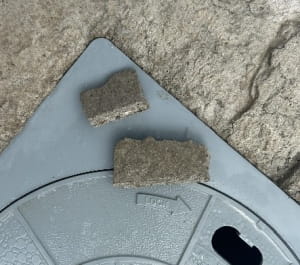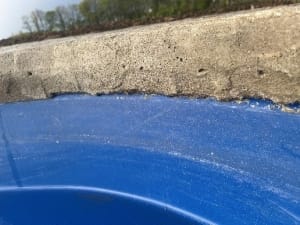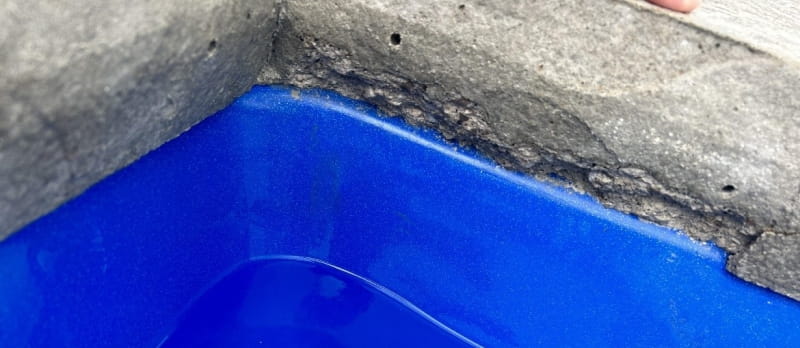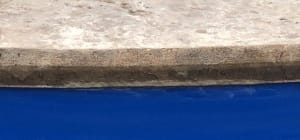The connection between the fiberglass pool shell and the concrete slab is a delicate point. If either the pool shifts OR the concrete shifts, it can cause a crack and break off. Despite our custom forms having a very favorable and durable return, there is no way to mitigate the risk completely. There are several causes of these shifts but the solution is the same.


The first and most common cause is slab movement. The slab can heave up from the winter freeze and then settling back down ever so slightly when it thaws. It's not actually the slab freezing but rather the soils below pushing the slab up. This small amount of movement can break off the very bottom of the concrete copings edge. This can also happen on new construction sites where the soil was disturbed during home construction. In the first year or two the entire site settles and with it comes the concrete above. Compaction does help and we go to great lengths to compact, but new construction settling still happens. Most of the time, once the repair is complete, that is it and additional breakage is not observed.


The second cause is a bit more mysterious. There are areas that experience substantial seasonal geological movement. This movement cannot be accounted for or anticipated. The movement is particularly prevalent in Delaware County Ohio presumably as a result of the Olentangy cavern system. My garage which is attached to my home moves nearly an inch ever spring and fall separate of the house foundation. It is evident in the door closing and large cracks in the drywall that come and go like clockwork every year. This same movement that shifts foundations can also make pool shells move ever so slightly. When the shell moves (fractions of an inch) the concrete which does not move can crack off as described above. Unfortunately for some families this can occur annually and may need additional 'counter measures' to resolve.
Lastly is ice damage. When a pool has been improperly winterized the water level can rise in the pool and reach the concrete. When the water level is at the top of the pool / concrete connection and then freezes, damage to the concrete coping will occur. This is can be modest to catastrophic depending on the severity of the freeze, the length of the freeze, and how much the ice floats up and moves during the freeze. This is definitely the worst thing that you can allow your pool to experience.
The solution is the same in all cases and involves a concrete mortar that is colored to match the slab. Though not always a perfect match it can be manipulated and tinted to get close and recreate the stone profile originally poured and is more durable than the original. This copping touch up is considered normal pool maintenance and usually done with the concrete 'detail' and reseal- about every other year or so.






